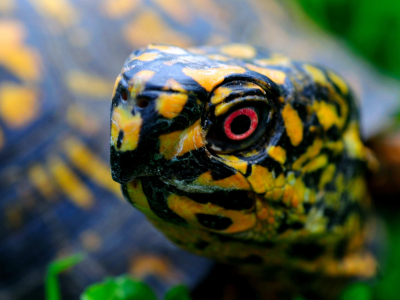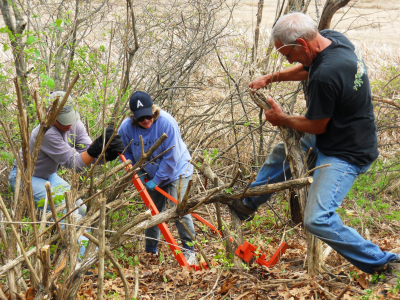Native Americans used fire to renew wildlife habitats and attract the animals they hunted. Today, trained natural resource specialists can set fires to knock back older vegetation, increase soil fertility, and spur the dense regrowth of young trees, shrubs, and other plants, including some rare kinds.
Fire as a Tool
Controlled burning (sometimes called “prescribed burning”) may or may not be an option for a small private landowner, but those who manage state properties, land trust parcels, municipal forests, and nature preserves can use controlled burns to establish or maintain areas of young forest and shrubland.
Generally, land managers use prescribed fire in natural communities that grew up shaped by fire, such as grasslands, heaths, barrens, and oak woodlands. Learn more from MassWildlife's Prescribed Fire webpage.
Firebreaks and Forecasts
Trained crews employ firebreaks, fire engines, and up-to-the-minute weather forecasts to keep a fire and its smoke under control. Periodic small fires reduce the amount of flammable fuel on the ground – fallen limbs, pine needles, dry leaves, and other debris – making it less likely that a big, uncontrolled wildfire will endanger human lives and property in the future.
A Range of Wildlife
Young forest created or refreshed through controlled burning provides a home for reptiles such as hognose snakes. It’s also used by large and small mammals. Plants that are restored by fire feed many butterflies, moths, and other pollinating insects, among them the Karner blue butterfly (its larvae eat the leaves of wild lupine), regal fritillary (violets and the flowers of other native plants), barrens buckmoth (scrub oak), and frosted elfin (wild lupine and wild indigo).
Bats feed on insects flying above openings. Birds such as whip-poor-wills, prairie warblers, eastern towhees, and bobwhite quail quickly home in on new plant growth for feeding, nesting, and rearing young.
Timing is Key
Burning in early spring before the growing season begins, or after plants have become dormant in the fall, will help maintain the types of plants on a site by top-killing trees that otherwise would grow and spread, shading out ground vegetation. It stimulates older shrubs, whose root systems later will send up abundant sprouts to form wildlife-friendly thickets.
A controlled burn can stimulate grasses and other low plants, including wildflowers. Some of the shrubs and trees that respond vigorously to fire are blueberry, blackberry, fire cherry, pitch pine, longleaf pine, black cherry, and many oaks, including low, dense-growing scrub oak.
Rare Plants
Many rare plants depend on disturbances caused by periodic fires. The nationwide effort to suppress wildfires has harmed longleaf pine, a southern species that needs frequent low-intensity burns to thrive. Fire – whether caused by lightning or humans – exposes areas of bare soil where the winged seeds of longleaf pine can germinate.
Planning a Burn
Careful planning leads to a safe, successful burn. Contact a consulting forester and your state’s forestry or wildlife agency to learn about laws and regulations, liability issues, and permit requirements.
The USDA Natural Resources Conservation Service (NRCS) offers advice and funding to landowners who want to make young forest using various habitat management techniques, including prescribed burning.
Read a brochure about Fire Management in the Northeast.
The Nature Conservancy
The Nature Conservancy conducts controlled burns to restore the health and diversity of some of the lands it manages, explained in the TNC "Land and Water Story" Why We Work with Fire.









